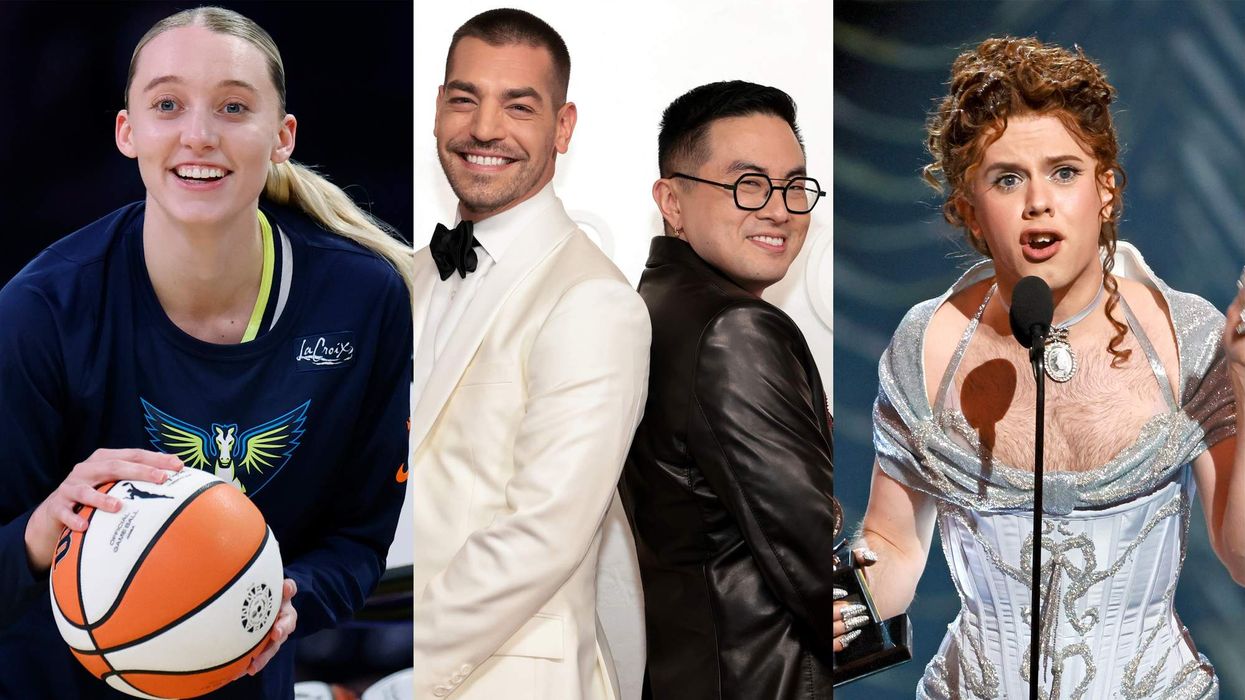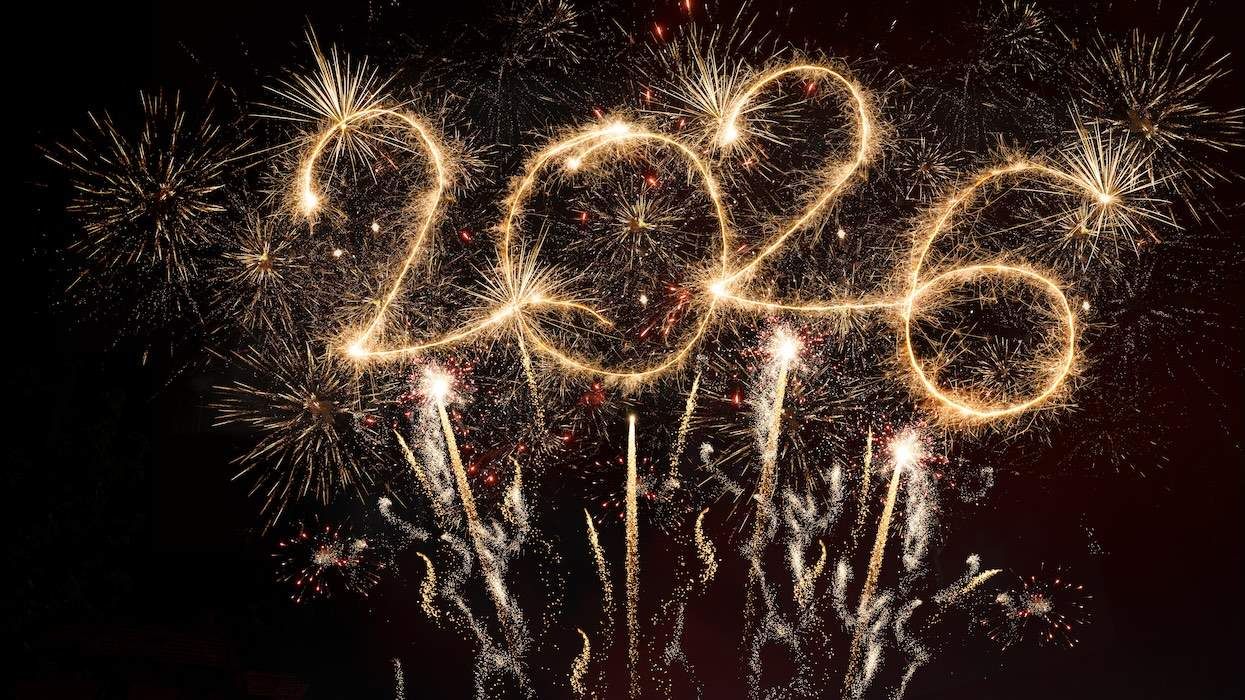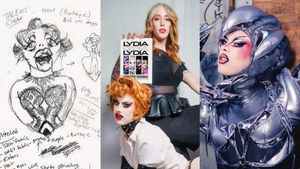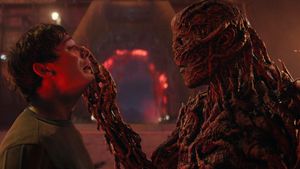The National LGBTQ Task Force was founded 47 years ago, when antisodomy laws and bar raids were common and many health professionals considered gay and bi people ill. Lobbying for change in the halls of power, the D.C.-based organization chipped away at discriminatory laws and challenged Democrats to stand by their queer constituency, working to secure rights through the Reagan era and the devastation of AIDS.
By the time Rea Carey began to leave a mark on the Task Force as deputy executive director in 2004, the marriage equality battle was raging and a backlash brewing. While the Task Force was central in the fight for marriage, it was far from the organization's only issue, as it also advocated for immigration reform, protections for LGBTQ+ families, trans rights, and racial justice. Through all this, Carey -- who became executive director of the organization 12 years ago -- remained a determined, calm presence who put the work first.
Under Carey's leadership, the Task Force's Creating Change conferences attracted LGBTQ+ activists from around the country for lively -- and sometimes controversial -- discussions. Most recently, the group marshaled its resources to ensure queer participation in the U.S. Census, fighting against the Trump administration's efforts to reduce LGBTQ+ representation in the national population count that determines billions in funding and the distribution of Congressional seats.
Now Carey is preparing to leave the Task Force, handing over the reins early next year to Kierra Johnson, a bisexual woman of color currently serving as deputy executive director. We spoke with Carey about why this was the time to go, and what's next for her storied organization.
The Advocate: Tell us about your history with The Task Force.
Rea Carey: I've been at the Task Force in some ways, in my heart, since I was 16 years old. I remember in Denver I'd go to this women's bookstore, about the time I was coming out, and I read about the Task Force and I thought, This is a cool organization. I never actually dreamed I would end up working there.
I actually joined the Task Force first as senior strategist and then as deputy executive director in 2004, and I became executive director in 2008, so about 17 years [I've worked there] or, in movement years, 276 years.
Why was now the right time to leave?
I've been thinking about it for a while. There were certain things I wanted to achieve and that I told the board I wanted to achieve when I came on as executive director in 2008. And with the staff and our volunteers and thousands of activists across the country, we've achieved so much and, actually, more than I ever could have imagined.
Because I'm an organizational nerd, I actually know it's very good and healthy for organizations to have different leaders at different times. So I've been planning for it and the time is now; the time is right.
I will say I have a bit of sadness because this year doesn't look like how I thought it would. I had hoped I'd be able to travel around the country and spend time with people we've been doing grassroots organizing work with for decades; having house parties and raising some money off of me and being in-person at [the] Creating Change [conference] this year. Unfortunately, because of COVID those things aren't possible. But like we're doing in different ways, we're adapting, and there are others ways I'll get to connect with people this year.

Tell us about the woman who will replace you and the future of the Task Force.
I'm so excited that we are also announcing our next executive director is Kierra Johnson, who has served as our deputy executive director for almost the last three years and was on the board of directors; she's been a colleague of mine for years. She recently used to run a reproductive justice organization called Urge and she's dynamic and brilliant and energized.
It's anyone's dream when they leave an organization to leave it with someone who's even more wonderful and perfect for the organization, and she is. She's spent a lot of time doing advocacy organizing and grassroots; doing national advocacy as well. So she'll be starting as ED in February 2021. She's really been a true partner over the last number of years. We've continued to move the organization forward fully as a racial, economic, gender and social justice organization that serves the LGBTQ community. So she's bringing all her experience to the next era of the Task Force.
How are advocacy organizations like the Task Force adapting to fundraising challenges in the COVID era?
With COVID and the entire country shutting down in March a lot has changed. And I'll say, basically, there are no silver linings to COVID, but here are some opportunities.Whether it's fundraising and reaching out to a much broader set of people through our online engagement or our trainings -- very soon we have a racial justice training, and in the past we would hold that in this or that city and we'd be able to gather a 100 or so people in person. Well, this year, as soon as we opened registration people began signing up. The same with [the] Creating Change [conference]; we'd usually have between 3,000 to 4,000 people there. What we've been learning from our colleagues who have also hosted conferences is that, while the format is different and we don't get to be together in person, it actually makes it accessible to people who never could have afforded to fly or take a bus to another city or place in the country, and they can actually be in community and learn from each other and share strategies.
Also, we're running the LGBTQ outreach for the U.S. Census. But again we had a game plan, going door to door, across the country, asking people to sign up, telling them why it's important our lives are seen and counted, and we haven't been able to do that. But we were able, with some increased funding, to have a massive, massive online campaign, and we're probably reaching people we never would have reached with our Queer the Census campaign.
Where do you think the Task Force -- and the larger LGBTQ+ movement -- will be in five to 10 years? What will be the main focus?
Certainly, in five to 10 years I expect us to have secured federal nondiscrimination protections. As you know, we won the Supreme Court ruling this summer securing employment protections -- but we have a long way to go. But in five to 10 years, I absolutely believe we'll have federal protections. But we still won't be finished. Securing freedom and equality and equity is really a life's work, not just for one organization, but the full movement.
We were talking about COVID earlier, so what we've seen even in the last six months is that the disparities that we knew already existed; the health disparities, the access disparities, the racial disparities, the violence that has existed for so long against so many members of our community and Black people in this country has only become more pronounced and more acute. We have learned from movements that have come before us, even if you secure laws, it doesn't mean that everyone can live their life to the fullest. So the future work of the Task Force and the future work of the movement, which is to ensure our vision -- and I know Kierra shares this vision, and I think will take it even further than I have ever been able to -- [is to] seek change based on all of us being whole people. We can't be a lesbian one day, a parent the next day, and Latinx the third day; we're all of those things every day. Until we move the country and not just the laws fully in a direction where ever single one of us can be fully who we are, our movement's work will not be complete.
What was your hardest moment leading the Task Force and your proudest moment?
It's hard to pick one that was the hardest. We faced a lot of challenges; we lost at the ballot on marriage, 32, 33 times before we started winning. We were not successful as a broader progressive community in securing immigration reform. There are some bigger-picture things I certainly wish had gone a certain way. There are a couple moments that really encapsulate some of the hardest moments.
I was in Los Angeles for the election in 2008. We had been going door to door on Prop. 8 [the ballot initiative that sought to reverse marriage equality in California]. We had been calling people; we brought people of faith to the table. We had done everything we possibly could as well as our colleagues on the ground and from around the country. And I remember that night, the leadership of different organizations coming together to have a pep rally in the middle of the night. We still hadn't gotten the presidential results or results on Prop. 8. We were concerned that the direction things were headed in for Prop. 8 were not good, but were hopeful for Obama. I remember getting on that stage and trying to dig deep for hope. And at 5 the next morning, when were still hoping there were more ballots to be counted, but we knew we were nearing the end and it still took a couple of days to sort it all out.
The feeling of elation over the first-ever Black president was one of the highest highs I've ever felt, and realizing that so many of our coworkers and neighbors, congregation members, had voted for Prop. 8 and against our ability to create the kind of families we want, was devastating. And we had lost before and we lost after, but there was something about Prop. 8 and the combination of the election with the president that really was one of our hardest points. At the same time, it turned into one of the most extraordinary catalysts for our community. After that, people who had never been engaged in this work, got engaged. Even with fear in their hearts, people got up the courage to come out and talk about why [marriage equality] mattered.
Even some of the most bitter moments have turned into opportunities for us. One other time that was both heartbreaking but gave me hope, and still gives me hope, was The Task Force and I were very involved in the comprehensive immigration reform work. At the time, most of our movement and most of our community was focused only on binational couples when it came to immigration as a policy matter. So the Task Force worked hard to make sure that our community really understood what immigration and immigration reform would mean. That it isn't only about binational couples, it's about trans immigrants, it's about families, it's about folks coming to this country and even then, treated in horrible, horrible conditions.
I was part of two civil disobedience actions that took place in D.C. -- one with women from many movements who came together and sat down in the streets and got arrested in protests. And the other was with young people; young immigrants. I thought, if they can sit down in the street and risk so much, we can too. So there are moments like that that have given me hope. I know at this time we need a lot of hope.
Thank you for all the work and years of effort that you and the Task Force have put into our lives and the equality movement.
I have been honored to serve a movement and a community of which I'm a part. I have no doubt, even with the challenges we face now, that our history of resilience and determination and fierceness is going to win the day.






































































Charlie Kirk DID say stoning gay people was the 'perfect law' — and these other heinous quotes